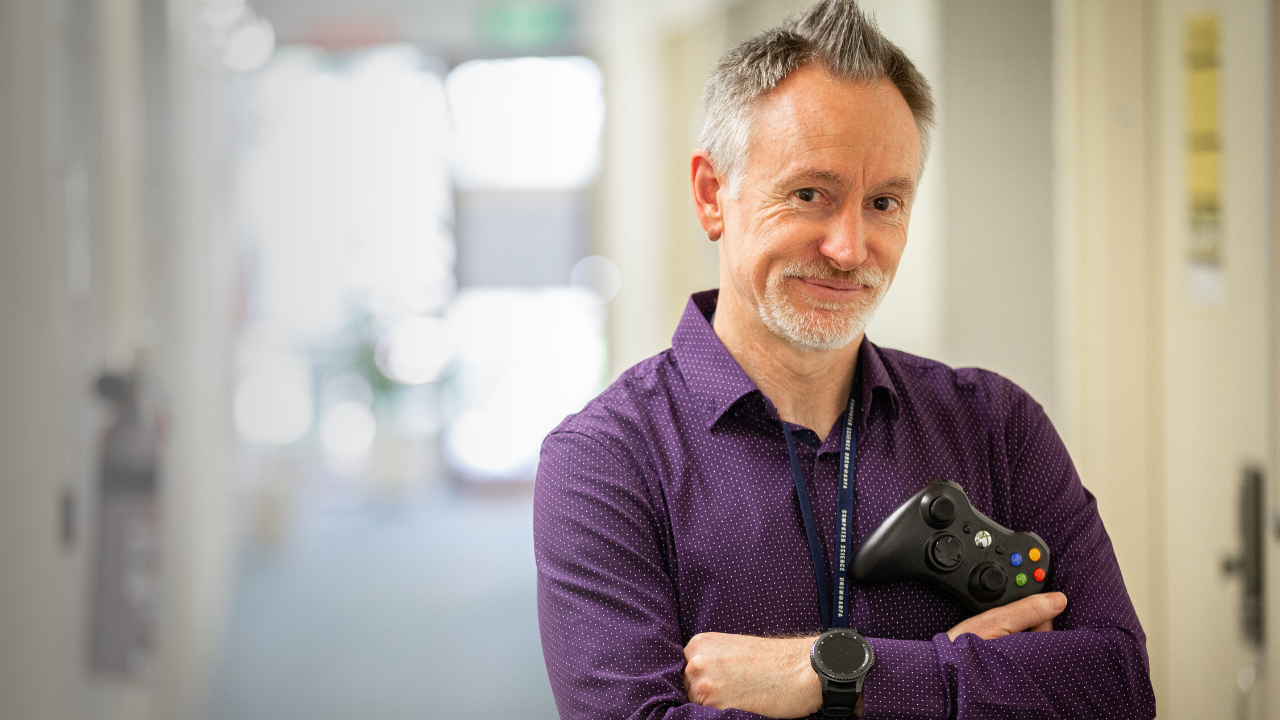Gaming your way to recovery
For almost half a century, video games have been ubiquitous in society as a means of entertainment and joyful release for people all over the world.
For almost half a century, video games have been ubiquitous in society as a means of entertainment and joyful release for people all over the world.

For almost half a century, video games have been ubiquitous in society as a means of entertainment and joyful release for people all over the world.
At UNSW Canberra, videos games are breathing new life into maintaining the health and well-being of their players. From mechanical systems used to rehabilitate injured persons, integrating existing video game media into the core of the recovery process, through to exertion gaming where players obtain a physical workout through play of the game, the possibilities are endless.
These systems, which make use of physical movement to control an onscreen avatar, provide users with a cohesive gameplay experience where the player is immersed to a far deeper extent compared to the traditional, sedentary handheld system.
UNSW Canberra’s Associate Professor Michael ‘Spike’ Barlow is spearheading the development of these systems and discussed how they can be used.
What is the aim of the gaming using components such as the elliptical runner?
We want to harness games where movement is part of the mechanics and a part of the core gameplay loop but we don't want it to be just about movement. We don't want to build a simulator of jogging; if people want to, they can go out and jog. We want a game where movement is part of what you need to do the game. We want to use commercial games that people already enjoy – we add physical activity to the mix.
What is the purpose of utilising physical activity in gameplay?
What we want to do is change digital game play from a sedentary activity where you are just sitting and not expending much energy, to one where you're actually physically engaged, you’re doing the same activities as your character. Therefore, you are exercising so you get a physical workout, you get your heart rate up, you breathe deeper and can even benefit mental wellbeing as well.

Capcom's Monster Hunter World is one of the commercially available games that can be adapted by UNSW Canberra's exertion system. Credit : NVIDIA
What are some of the common uses for such systems?
We see that this system could be useful for people in their day-to-day life as stress-relief and as exercise. What we're doing at the moment is we have a study underway that's been funded by the Heart Foundation, which is quantifying and measuring the effectiveness of this system. We’re finding that depending on the game that we pick and the thresholds that we put for where a walk threshold versus a run threshold for our characters, people can get a serious aerobic workout if that's what they desire.
Why are games a valuable tool when it comes to rehabilitation?
People who have suffered sporting injuries or accidents, such as in a motor vehicle, often have to go through painful and long rehabilitation. Adherence to a rehabilitation plan is difficult. You have to have willpower because it's repetitive and it's boring. We can and have made the actions that you need to do for rehab the game control actions. You play the game to progress in the game. When you do, the action might be extending your arm, it might be clenching your fist, whatever is required to rebuild that body part and restrengthen it. We can build the game mechanic around that and the person can enjoy it.
What physical mechanics are the hardest to achieve in a virtual world?
Our sense of space and pressure, those are much harder to stimulate. We need whole body suits for that purpose, and we also need to be able to move freely through space. That's difficult at the moment. While chemical rather than physical, there’s also smell – that is difficult. There is a long way to go. We're making steps, maybe not baby steps, larger steps, but there's still a number of things to do.